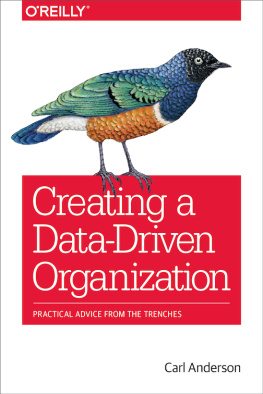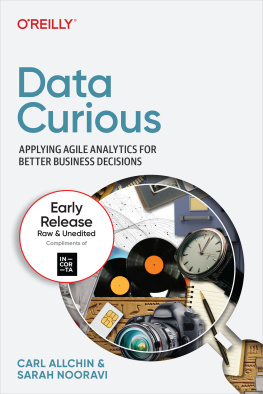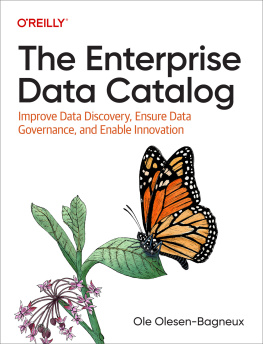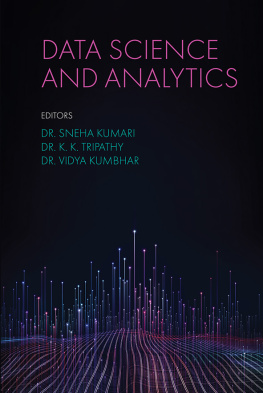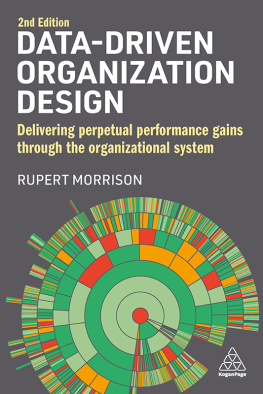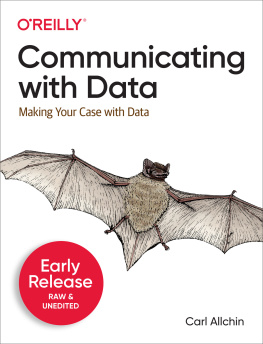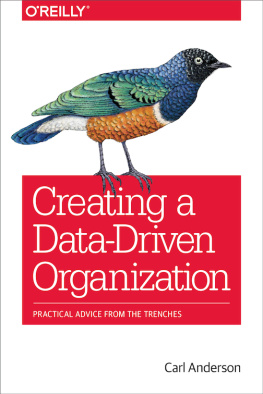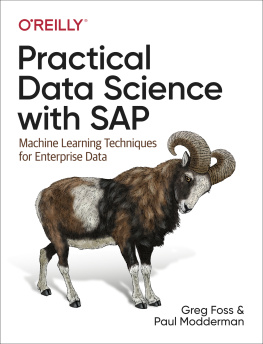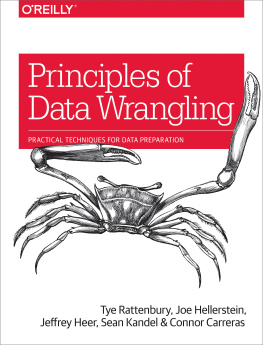Summary
In this book, I address two core questions:
- What does it mean for an organization to be data-driven?
- How does an organization get there?
Many organizations think that simply because they generate a lot of reports or have many dashboards, they are data-driven. Although those activities are part of what an organization does, they are typically backward-looking. That is, they are often a declaration of past or present facts without a great deal of context, without causal explanation of why something has or has not happened, and without recommendations of what to do next. In short, they state what happened but they are not prescriptive. As such, they have limited upside.
In contrast, consider more forward-looking analyses, such as predictive models that optimize ad spend, supply chain replenishment, or minimize customer churn. They involve answering the why questionsor more generally, w-questions: who, what, when, why, and wheremaking recommendations and predictions, and telling a story around the findings. They are frequently a key driver in a data-driven organization. Those insights and recommendations, if acted upon, have a huge potential impact upon the organization.
However, such insights require collecting the right data, that the data is trustworthy, the analysis is good, that the insights are considered in the decision, and that they drive concrete actions so the potential can be realized. Phew! I call this sequencethe flow from collection to final impactthe analytics value chain.
This last step in the chain is critical. Analytics is not data-driven if its findings are never seriously considered or acted upon. If they are unread, ignored, and the boss is going to do whatever he or she wants to do, regardless of what the data says, then they are ineffectual. To be data-driven, an organization must have the right processes and the right culture in place to augment or drive critical business decisions with these analyses and therefore have a direct impact on the business.
Culture, then, is the key. This is a multifaceted problem that involves data quality and sharing, analyst hiring and training, communication, analytical organizational structure, metric design, A/B testing, decision-making processes, and more. This book will elucidate these ideas by providing insights and illustrative examples from a variety of industries. I also bring in the voices of experience in interviews that provide advice and insights of what worked and what didnt from a variety of data science and analytics leaders. I hope to inspire all our readers to become more data-driven.
Moreover, throughout the book I emphasize the role that data engineers, analysts, and managers of analysts can play. I suggest that a data-driven organization and requisite culture can and should be built not only from top-down leadership but also from the bottom up. As Todd Holloway, head of data science at Trulia, remarked at the 2014 Chief Data Officer Executive Forum, The best ideas come from the guys closest to the data. Not only are they the ones who work directly with the data sources and who recognize and can remedy the data-quality issues and understand how best to augment the data, but they often come up with the good product ideas. In addition, they can help educate the rest of the organization to be more data literate. Part of that comes from developing their skill set and using it to do good work. Another part, however, comes from being more business savvylearning the right questions to ask and business problems to tackleand then selling their insights and recommendations to the decision-makers and making a compelling case of what the finding or recommendation means to business and why it makes an impact.
And there are great impacts and gains to be had. One report, claims that analytics pays back $13.01 for every dollar spent. Being data-driven pays!
Data-drivenness is not a binary but rather a continuum: you can always be more data-driven, collect more high-quality relevant data, have a more skilled analytics organization, and do more testing. Moreover, you can always have a better decision-making process. In this book, Ill discuss the hallmarks of great data-driven organizations. Ill cover the infrastructure, skills, and culture needed to create organizations that take data, treat it as a core asset, and use it to drive and inform critical business decisions and ultimately make an impact. I will also cover some common anti-patterns, behavior that inhibits a business from making the most from its data.
The goals of the book, then, are to inspire the analyst organization to play its part, to provide pause for thoughtto ask are we making the most of our data? and can we be more data-driven?and to stimulate discussion about what more can be done to make use of this key resource. It is never too early to be thinking about this. Senior management and founders should be working to bake this into the very fabric of their company at an early stage. So, lets find out more about what is entailed.
Who Should Read This Book?
The information here will help you build and run an internal analytics program, deciding what data to gather and store, how to access it and make sense of it, and, most crucially, how to act on it.
Whether youre the only data scientist at a startup (and wearing a half-dozen other hats, to boot!), or the manager at an established organization with a roomor a departmentfull of people reporting to you, if you have data and the desire to act more quickly, efficiently, and wisely, this book will help you develop not just a data program but a data-driven culture.
Chapter Organization
Roughly speaking, this book is organized by thinking about that flow along that value chain. The first chapters cover data itself, in particular choosing the right data sources and ensuring that they are high quality and trustworthy. The next step in that chain is analysis. You need the right people with the right skills and tools to do good work, to generate impactful insights. I call this group the analysts, deliberately using the term in its broadest sense to cover data analysts, data scientists, and other members of the analytics organization. I do that to be inclusive because I believe that everyone, from a junior data analyst fresh out of school to a rockstar data scientist, has a role to play. I cover what makes a good analyst, how they can sharpen their skills, and also cover organizational aspects: how those analysts should be formed into teams and business units. The next few chapters cover the actual analytical work itself, such as performing analyses, designing metrics, A/B testing, and storytelling. I then proceed to the next step in the chain: making decisions with those analyses and insights. Here I address what makes decision-making hard and how it can be improved.

